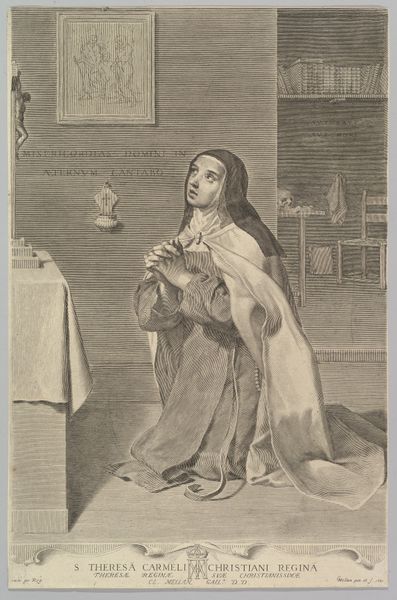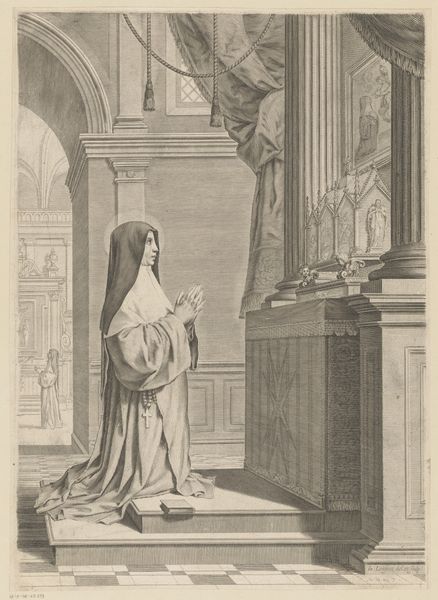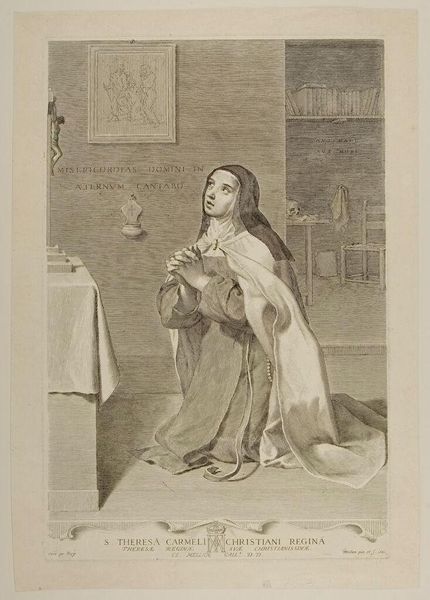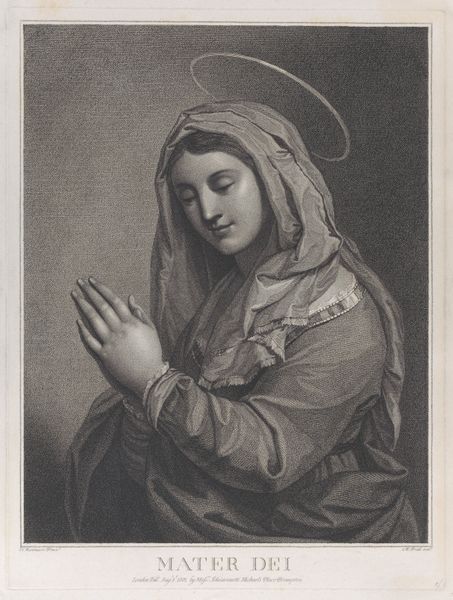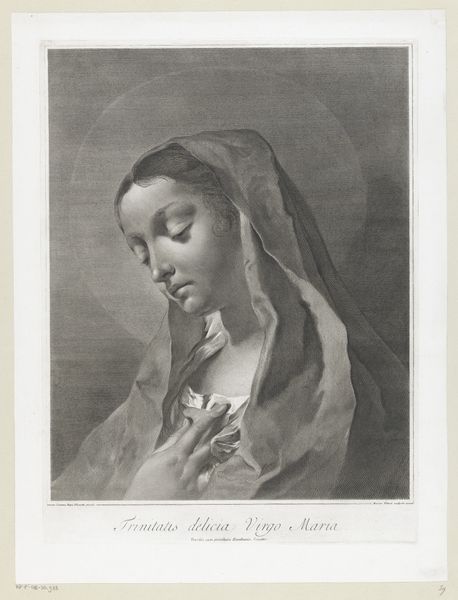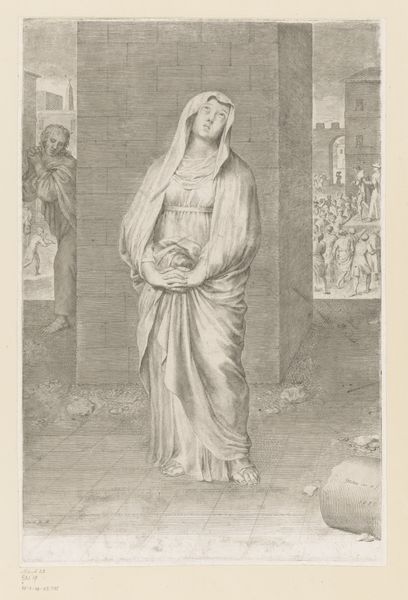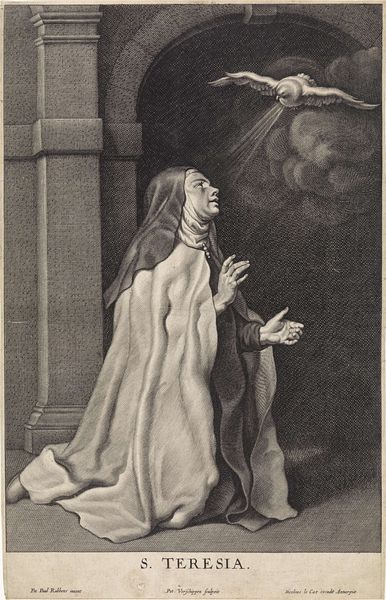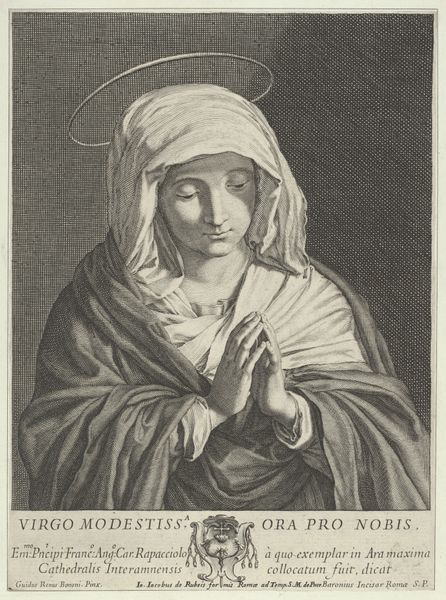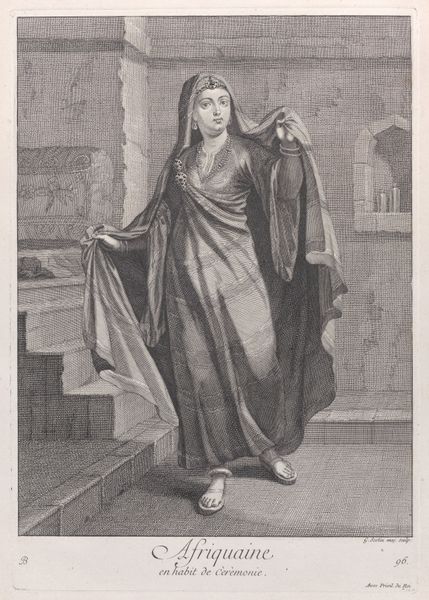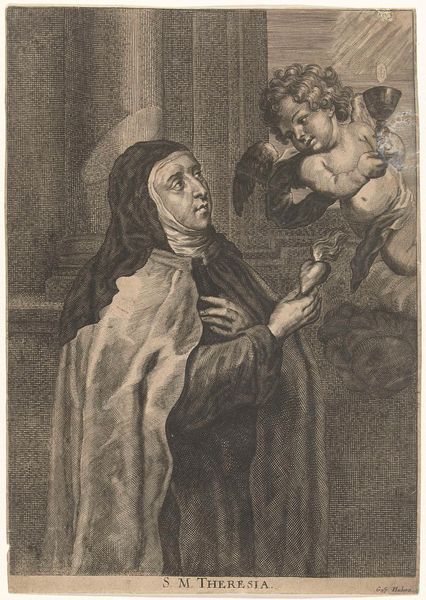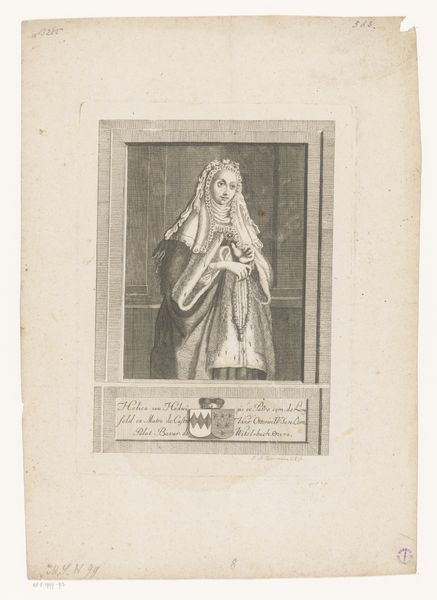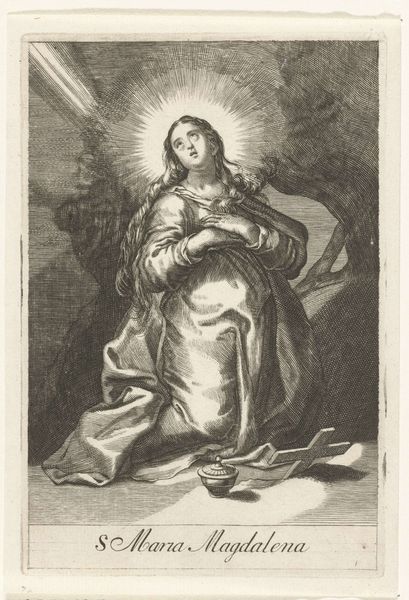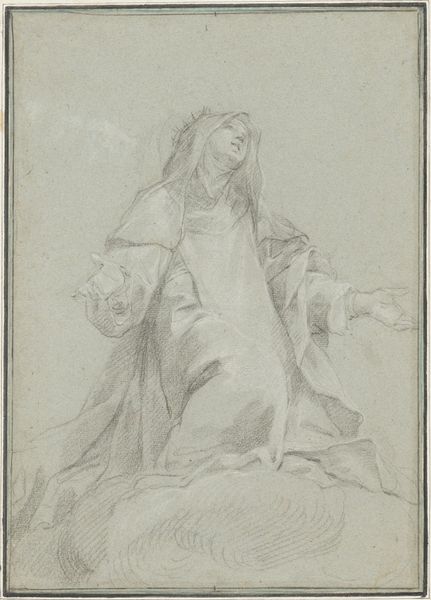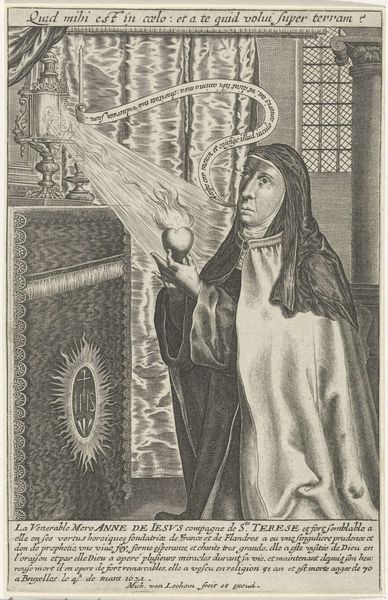
drawing, print, engraving
#
portrait
#
drawing
#
baroque
# print
#
history-painting
#
engraving
Dimensions: sheet: 17 5/16 x 11 5/16 in. (44 x 28.8 cm)
Copyright: Public Domain
Curator: Today we’re looking at "St. Claire," a print by Claude Mellan from 1667, currently residing at the Metropolitan Museum of Art. Editor: First thought? Strikingly serene. The detail in the light streaming from that monstrance – like actual divine rays – pulls you right in. The nun's completely absorbed in her prayer. Curator: Mellan was renowned for his engraving technique, wasn't he? Here, he uses a single line, varying the thickness to create light and shadow, modelling form with incredible precision. Think about the socio-political context; how art was deeply intertwined with religious expression during the Baroque period. What message did this represent to people in society? Editor: A single line? Wow. No room for error then, huh? Sheesh. But, yes! It almost feels photographic because of it! Beyond just skill, it gives such incredible, pure vulnerability. It feels intensely intimate; the composition forces you to bear witness. Curator: Absolutely, and remember St. Claire herself – founder of the Poor Clares, a symbol of female religious strength and devotion within the Catholic Church. So, seeing the composition with this awareness encourages reflections on issues related to religious, female representation. Editor: That devotion, yeah…you see it radiating outwards through Mellan's work. And there's an austerity, I notice, even beyond her humble habit, that amplifies the devotion aspect in her expression...it seems… intentional? It begs reflection. Curator: This kind of representation helped construct narratives around gender and spirituality in the period, too. Mellan wasn't just depicting faith, but constructing it through artistic representation and imbuing cultural meanings. Editor: Mmm, okay. The lack of frills and flourish pushes us, almost, to question everything we understand about beauty. That one continuous line and a complete immersion into an imagined reality...it's a little too intense for this one human here, eh? Curator: Well, it prompts discussions on the role of the artwork, wouldn’t you say? About whether it serves as an artistic mirror, reflection of faith or social-commentary… It shows the relationship between religion, history, and art...and invites new dialogue! Editor: It certainly does. Phew, thanks for holding space while I was trying to have that conversation with myself! The sheer level of depth created here from a simple drawing and history creates such a wide playing field of emotion and awareness.
Comments
No comments
Be the first to comment and join the conversation on the ultimate creative platform.
